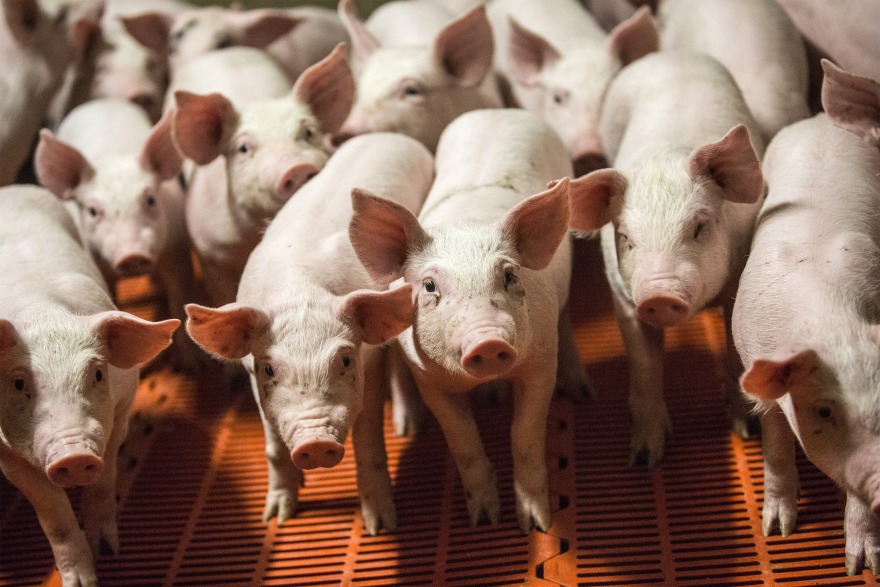
Agricultural News
Rabobank Research Suggests African Swine Fever Much Bigger Problem Than Initial Estimates Showed
Sat, 13 Apr 2019 10:48:28 CDT
 Production losses from African swine fever (ASF) have eclipsed initial estimates. The Chinese pork production shortfall, along with shortfalls in Southeast Asia, will create challenges and opportunities for animal protein exporters.
Production losses from African swine fever (ASF) have eclipsed initial estimates. The Chinese pork production shortfall, along with shortfalls in Southeast Asia, will create challenges and opportunities for animal protein exporters.
- In 2019, we expect Chinese pork production losses of 25% to 35% in response to ASF. Reports of extreme losses (over 50%) are limited to confined areas.
- Sizable breeding herd losses will delay the Chinese pork industry's recovery. Rebuilding efforts will be further complicated by the risk of recontamination, despite available financial resources.
- The disease has spread to Vietnam, where we expect production losses to exceed 10%. ASF has also entered Cambodia and could move further into Southeast Asia, with more production losses to follow.
- The shift in global trade patterns to meet animal protein demand will be highly dynamic. This will create opportunities for those companies with an exportable surplus and access to China and Southeast Asia. It will also create logistical inefficiencies and raise costs through the entire supply chain.
ASF Now Endemic in China, and Losses Are Severe
Since its discovery in August 2018, ASF has spread to every province in mainland China. With ASF now affecting an estimated 150-200m pigs, the expected 30% loss in pork production is nearly 30% larger than annual US pork production and equivalent to Europe's annual pork supply.
These losses cannot easily be replaced by other proteins (chicken, duck, seafood, beef, and sheepmeat), nor will larger imports be able to fully offset the loss (see Figure 1). We believe this will result in a net supply gap of almost 10m metric tons in the total 2019 animal protein supply.
Inaccurate reports of Chinese herd liquidation and an early regional supply imbalance were disruptive to initial price discovery, obscuring the impact of production losses. As the government eased restrictions on the movement of animals (and pork), regional prices converged, but moved higher along with the herd loss (see Figure 2). With the full magnitude of herd losses quantified, global protein customers are scrambling to secure long-term protein supplies.
China's herd-rebuilding will be slow and take years. Producers remain cautious given the risk of recontamination and are focused on improving biosecurity at remaining operations. Government support for rebuilding cannot convince producers who will in the end carry the bulk of the risk.
Losses Not Limited to China
ASF spread to Vietnam in February and more recently to neighboring markets in Southeast Asia. Based on the commonalities with Chinese production, we expect these markets to suffer sizable ASF herd losses (on a percentage basis) and experience similar difficulties in disease containment. Much of Southeast Asia will have difficulty repopulating its herd and securing provisional protein supplies. ASF losses in Southeast Asia will exacerbate global protein shortfalls, adding further upside pressure to global markets.
Secular Shift in Chinese Protein Consumption
Rabobank expects available global protein supplies to be redirected to China in an effort to satisfy the growing protein deficit. This unprecedented shift in trade will likely create unexpected product shortfalls in markets previously served by these suppliers, creating short-term market volatility that will ultimately result in higher global protein prices. A secular shift towards lower Chinese pork consumption will support increased demand for poultry, beef, seafood, and alternative proteins that will shape global production trends.
Opportunity for Exporters, but Restrictions Could Complicate the Trade Response
Animal protein companies with an exportable surplus and access to markets in China and Southeast Asia stand to benefit from the impacts of ASF. The EU, the US, and Brazil appear best placed to respond to increased import demand for pork and other animal proteins into China and Southeast Asia.
ASF has entered Europe: the disease is endemic in parts of Eastern Europe, such as the Baltic States and parts of Poland, and Russia. ASF outbreaks have been recorded in a number of other countries, including, notably, Belgium in September 2018. The potential for outbreaks to restrict exports from significant pork-producing countries, such as Germany, cannot be ruled out. Such restrictions would complicate the trade response to ASF in China and Southeast Asia.
The US is a major pork producer and exporter, yet the current tariffs on US pork exports to China are restricting current trade. Further, the US is a major poultry producer and exporter, but cannot export to China due to a ban associated with avian influenza imposed in 2015. If the trade tension that underlies these barriers does not ease soon, it could also complicate the global trade response to ASF.
Source- Rabobank
WebReadyTM Powered by WireReady® NSI
Top Agricultural News
More Headlines...





